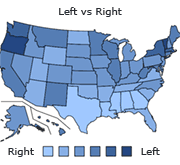Horse Welfare and Wastage

Understanding horse welfare and wastage begins with looking at the science of their behaviour including the history of horse evolution. Demystifying behaviour allows us to achieve more with our horses and reduce horse wastage, oftentimes a result of insufficient understanding. Behaviour is a result of genetics, selective breeding, environment & care, development, and training, and is heavily influenced by the amount and type of stabling, as well as the use and handling of the horses.
What do you know about horse care, welfare and wastage? This quiz has only 10 random questions to give you an idea about your own knowledge. Taking the quiz is meant to help you assess what you already know, to help you expand your understanding and to help you identify whether further education would be a good plan to become more comfortable with your horse and your mutual relationship. This quiz is NOT meant to pass judgement on anyone! If we do not ask questions of others and ourselves, then we risk safety, welfare and mental well-being for the horse. Take the quiz and challenge yourself. And don't forget, enjoy it!


